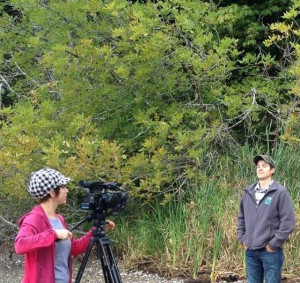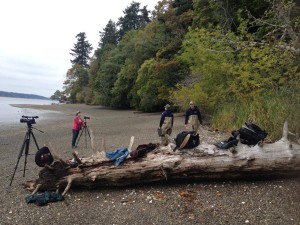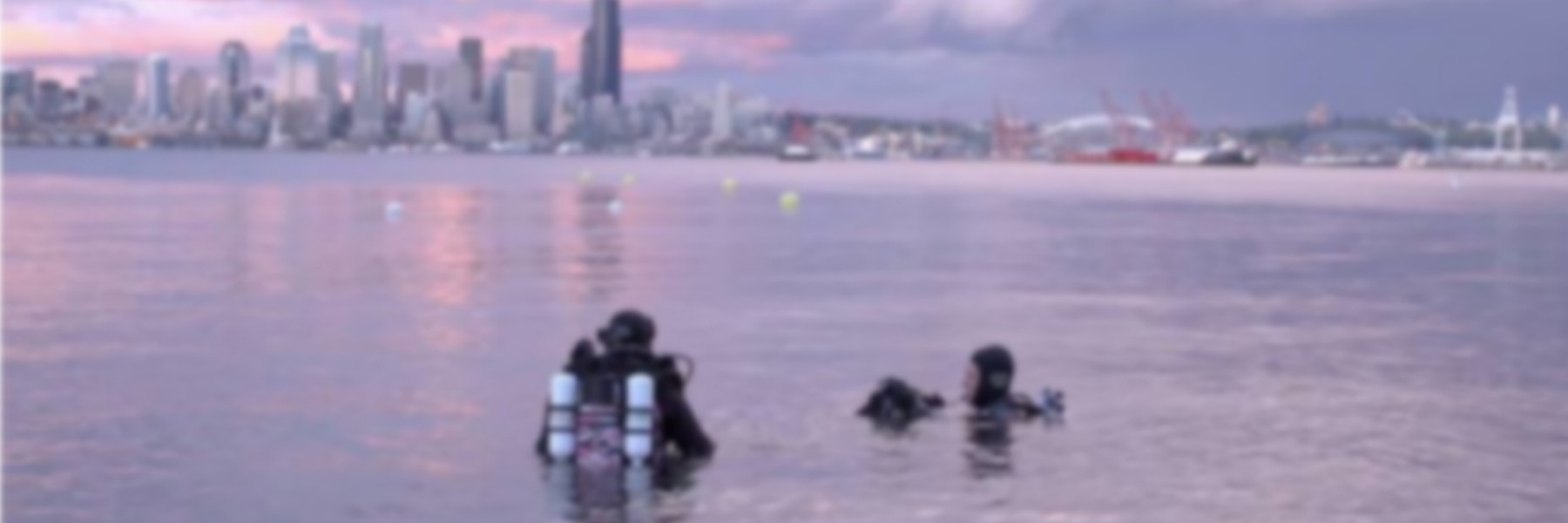 Sound will make or break your video. Period. You can be a rockstar with a camera, insanely articulate, artistic and technically talented, but if your audio sucks, it will make your video pretty much unwatchable or at very least incredibly irritating and distract from the message.
Sound will make or break your video. Period. You can be a rockstar with a camera, insanely articulate, artistic and technically talented, but if your audio sucks, it will make your video pretty much unwatchable or at very least incredibly irritating and distract from the message.
First off, I’ll precede this by saying there are many ways to skin the proverbial cat.
Secondly, I have yet to attend any fancy film school, so I am probably missing a whole host of ‘tricks’ that are common knowledge to those who did. (which is why I do as much 2nd camera, AC, PA, etc… work as I can – to observe and acquire knowledge , I am an excellent snow monkey)
That said, I’ve learned a lot attending the school of hard knocks and buggered up audio. The toughest for me is always the dreaded beach shot with wind.
How to deal with a windy noisy beach:
1) Hire a pro, and stick to just making pretty moving pictures with royalty free music.
2) Admit your audio sucks, and stop with the half-assery justification “it’s good enough” and do us a massive favor by putting in the hours, investing in a bit of necessary equipment and learning how to get better audio before torturing us. (I have numerous small semi-personal projects that never saw the light of day due to sub par audio)
 The beach or waterfront is a venue that seems to be heavily utilized here in the northwest, probably because we have beautiful surroundings which incorporate mountains and often epic skylines with expansive water. Simply put, it can make for beautiful video and is way cooler than the local park with garbage cans bokeh’d out in the background.
The beach or waterfront is a venue that seems to be heavily utilized here in the northwest, probably because we have beautiful surroundings which incorporate mountains and often epic skylines with expansive water. Simply put, it can make for beautiful video and is way cooler than the local park with garbage cans bokeh’d out in the background.
The problem is background noise. More often than not there is a bit of wind, there are waves lapping on the shore, there are boats, and there are the errant rogue ‘waves’ from passing ships. Worst case this causes the dreaded unintelligible audio completely drowned out by wind hitting on camera mic with auto gaine enabled that plagues beginning shooters. You may have an amazing message, but if we can’t hear it, it is lost.
Getting a lav mic will help bring the talents voice to the forefront, but unless you are monitoring your audio you will have no idea when the wind drowns it out (even with the cute little wind screens. Learn to listen. Learn to read the wind, and if at all possible reframe the shot so that you can actually protect the mic from the wind with the talent’s body.
If you can’t get any relief from wind that way, then reconsider your options. Is it possible to shoot artsy shoreline, water and sea-bird shots, the talent walking in the sand, picking something up, looking longingly at the water, and then record the narration in a quieter venue? Even if the ‘other’ venue isn’t as visually appealing you can use the shoreline footage as cutaway, and the ‘good sound’ will more than make up for it. And hey, you shouldn’t be shooting a long one shot anyway. Cutaways are AWESOME!
If there isn’t any wind, but you are plagued by the occasional boat or dog or other quiet distraction in the background, then shoot some footage of the distraction and use it for opening and/or cutaway. If the viewers eye sees a cutaway of a jet ski, as long as its just a quiet background effect and not drowning out the talent, the brain will essentially edit it out as a distraction and consider it ambient texture. Need an example? Say you are showing up at a beach cleanup and there are jet skis, someone with a leaf blower, laughing kids playing tag and the occasional kite boarder kicking around making noise. You know you have a few time sensitive interviews to do and you really need to get them done now. Open your video with a montage that ‘sets the scene’ a wide shot of the venue, a side shot of the leaf blower, a close up of the kite boarder and his flapping noisy kite, the cute couple with kids walking their dog… Now, as long as you are using a lav and do a reasonably good job pausing when the noise gets REALLY loud you can edit your interview with some cut-aways and it will be much more consumable.
If you simply can’t escape the wind, shoot some cut-aways of the waves being whipped by the wind and the trees or sand being blown, then the viewer will excuse a little bit of wind noise now and then, but still try to position the talent to minimize it if at all possible.
What if you don’t have a lav mic? Well, here is a trick that is not ideal but will work in a pinch. It’s less than ideal because you can’t monitor the audio so no clue if it worked until you’ve cut scene. Keeping the limitations in mind, if you have an iPhone, use voice recorder app, put it in the talents front pocket and do the best you can. If you avoid shooting closeups where you can see their lips moving, you can get away with overlaying the audio as a soundtrack for the video and again USING CUTAWAYS. This technique also works if you are shooting one or two people chatting a distance from the camera and don’t have a wireless lav, and don’t want to hassle with shooting narrative separately.
So do my techniques and recommendations work? I’ll let you be the judge. This video was shot on a beach, you can see the wind blowing in the background. We were in the intertidal zone, with outgoing tide so it was like a parabolic mirror for boat noise, ducks, geese, and people walking. I turned the talent to protect the lav mic from wind noise and majority of beach noise, I was monitoring the audio so would stop him if he fidgeted around and turned his body into the wind (so I could hear it). This was shot with two cameras, a Canon 5DMK2 with 70-200 L IS 2.8 and a Sony EX1 with its handy XLR inputs and ability to monitor audio in camera. I also used the Sony EX1 for all the wide and handheld shots because of its handy servo-zoom, balanced form factor with top handle for the low shots and solid in camera stabilization, and graded the snot out of it in post to help bring it closer from a contrast and saturation point of view (its not perfect but it tells the story and isn’t too distracting). A couple cutaways were done with C100.
